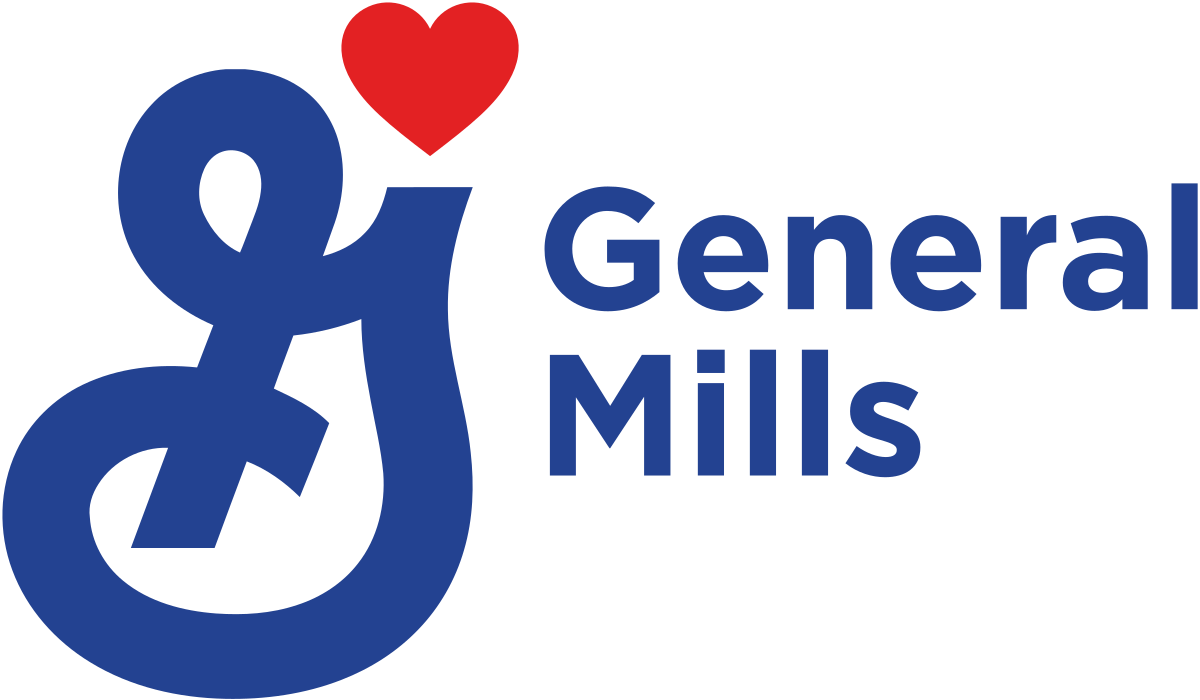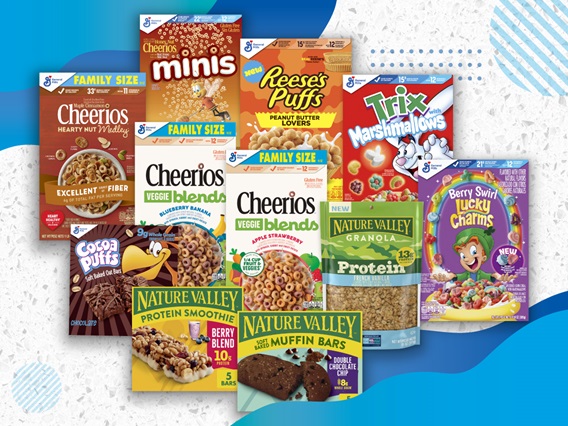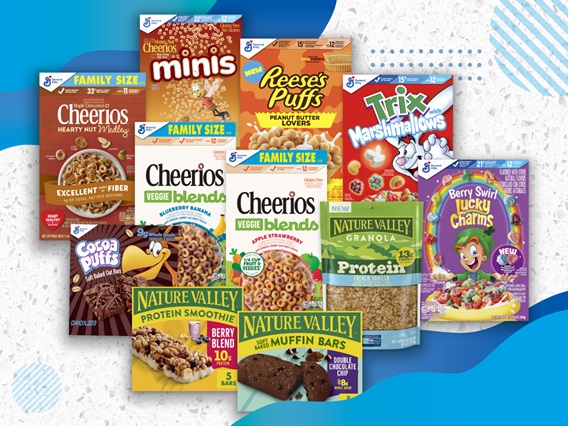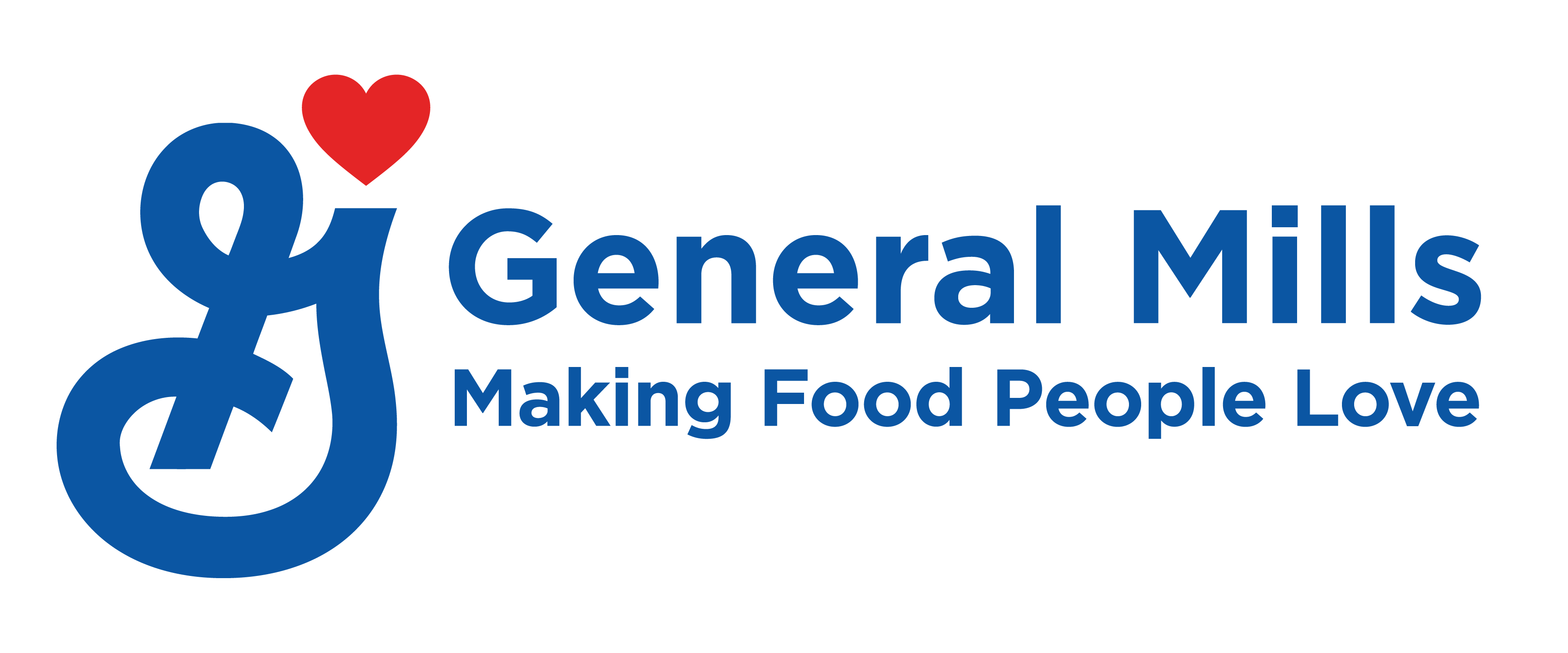General Mills, Inc. (NYSE:GIS) Earnings Preview: A Closer Look at Financial Expectations and Strategies

- General Mills is expected to report an EPS of $0.95 for the third quarter of fiscal 2025, marking an 18.8% decline year-over-year.
- Projected revenue for the quarter is approximately $4.95 billion, a decrease of 2.8% from the previous year, with plans to increase media spending by over 40%.
- The company's financial metrics reveal a P/E ratio of 13.04, a price-to-sales ratio of 1.69, and a debt-to-equity ratio of 1.58.
General Mills, Inc. (NYSE:GIS) is a leading global food company known for its wide range of products, including cereals, snacks, and pet foods. As it prepares to release its third-quarter fiscal 2025 earnings, analysts have set expectations for an earnings per share (EPS) of $0.95. This represents an 18.8% decline from the previous year, reflecting the challenges the company faces.
The company's revenue is projected to be approximately $4.95 billion, a 2.8% decrease compared to the same quarter last year. This decline is attributed to rising selling, general, and administrative costs, which have impacted the company's financial performance. Despite these challenges, General Mills has a history of outperforming earnings expectations, with an average earnings surprise of 7.8% over the past four quarters.
General Mills plans to increase its media spending by over 40% for the fiscal third quarter, as highlighted in its latest earnings call. This strategic move aims to boost brand visibility and drive sales, even as the company navigates cost pressures. The Zacks Consensus Estimate suggests that revenues will be around $5 billion, slightly higher than Wall Street's projection.
The company's financial metrics provide further insight into its market valuation. General Mills has a price-to-earnings (P/E) ratio of approximately 13.04, indicating how the market values its earnings. The price-to-sales ratio stands at about 1.69, reflecting investor sentiment towards its revenue. Additionally, the enterprise value to sales ratio is around 2.30, suggesting the market's valuation of the company's total worth relative to its sales.
General Mills' debt-to-equity ratio is approximately 1.58, highlighting its reliance on debt financing. The current ratio of around 0.92 suggests the company's ability to cover short-term liabilities with its short-term assets. These financial metrics, combined with the company's strategic initiatives, will be closely watched by investors as the earnings announcement approaches.
| Symbol | Price | %chg |
|---|---|---|
| ICBP.JK | 9125 | -0.82 |
| INDF.JK | 7075 | -2.47 |
| MYOR.JK | 2180 | -0.92 |
| CMRY.JK | 4690 | 0.21 |

General Mills, Inc. (NYSE: GIS) Exceeds Earnings Expectations
General Mills, Inc. (NYSE: GIS) is a leading global food company known for its wide range of products, including cereals, snacks, and meals. The company competes with other major food manufacturers like Kellogg's and Nestlé. On September 17, 2025, General Mills reported its earnings, revealing an earnings per share (EPS) of $0.86, surpassing the estimated $0.81. The company also reported a revenue of approximately $4.52 billion, slightly exceeding estimates.
General Mills has exceeded its quarterly sales estimates, driven by increased demand following strategic price cuts on select products. This approach has helped the company maintain its annual forecasts, showcasing its resilience and effective pricing strategies. Jeff Harmening, Chairman and CEO, expressed satisfaction with the returns on investments in value, innovation, and new products, which have enabled the company to grow or maintain its market share in 8 out of its top 10 U.S. categories.
The company's financial metrics provide insight into its market valuation and financial health. General Mills has a price-to-earnings (P/E) ratio of approximately 11.89, indicating how much investors are willing to pay for each dollar of earnings. Its price-to-sales ratio stands at about 1.38, reflecting the market's valuation of its sales. The enterprise value to sales ratio is around 2.15, while the enterprise value to operating cash flow ratio is approximately 14.33.
General Mills has an earnings yield of 8.41%, reflecting its earnings relative to its share price. The company's debt-to-equity ratio is about 1.66, suggesting a higher level of debt compared to equity. Additionally, the current ratio is approximately 0.67, indicating its ability to cover short-term liabilities with short-term assets. These figures highlight the company's financial structure and its ability to manage debt and liquidity.

General Mills, Inc. (NYSE:GIS) Quarterly Earnings Preview
- General Mills is set to release its quarterly earnings with an estimated EPS of $0.81 and revenue of $4.52 billion.
- Despite an anticipated decline in earnings, General Mills has a history of outperforming earnings expectations.
- Key financial ratios such as the P/E ratio of approximately 12, and the debt-to-equity ratio of about 1.66, highlight the company's financial health and market perception.
General Mills, Inc. (NYSE:GIS) is a leading global food company known for its popular brands like Cheerios and Yoplait. The company operates in the consumer staples sector, competing with other giants like Kellogg's and Nestlé. General Mills is set to release its quarterly earnings on September 17, 2025, with analysts estimating an EPS of $0.81 and revenue of $4.52 billion.
Analysts from Zacks Investment Research expect a decline in earnings for the quarter ending August 2025, primarily due to lower revenues. The market is keenly observing how the actual results will compare to these estimates, as this could significantly impact GIS's stock price. If General Mills surpasses expectations, the stock might rise; if not, it could decline.
Despite the anticipated decline, General Mills has a strong track record of outperforming earnings expectations. In the most recent quarter, the company reported earnings of $0.74 per share, surpassing the Zacks Consensus Estimate of $0.71, marking a 4.23% surprise. This consistent performance has led to a positive shift in earnings estimates, suggesting a potential continuation of its earnings-beat streak.
General Mills has a price-to-earnings (P/E) ratio of approximately 12, indicating how the market values its earnings. The price-to-sales ratio is about 1.39, reflecting the market's valuation of its revenue. The enterprise value to sales ratio is around 2.16, showing the company's total valuation relative to its sales. These metrics provide insight into the company's financial health and market perception.
The company's debt-to-equity ratio is approximately 1.66, indicating its leverage level. The current ratio is around 0.67, which may suggest potential liquidity challenges in meeting short-term obligations. The earnings yield is about 8.33%, offering insight into the return on investment for shareholders. These financial metrics are crucial for investors assessing General Mills' financial stability and growth potential.

General Mills Warns of Profit Pressure and Slower Growth Amid Tariff Headwinds
General Mills (NYSE:GIS) issued a cautious outlook for its new fiscal year, forecasting flat-to-negative organic sales and a steep drop in adjusted operating profit as it contends with weakening consumer demand and rising input costs tied to U.S. tariffs. As a result, the company’s shares fell over 3% intra-day today.
The packaged food giant expects organic net sales to range from down 1% to up 1%, while adjusted operating profit is projected to fall 10% to 15% in constant currency from last year’s $3.4 billion base. The company attributed the earnings pressure to a combination of tariff-driven cost inflation, elevated strategic spending, and a corporate incentive reset—factors it says will outweigh benefits from cost-saving initiatives and an extra fiscal week.
General Mills also acknowledged that category growth in fiscal 2026 is likely to underperform its long-term expectations, pointing to a tough consumer environment where budget-conscious shoppers are pulling back amid economic uncertainty and price fatigue.
Despite the near-term headwinds, the company plans to make sizable investments in growth areas, particularly in its U.S. fresh pet food business, as well as in value-focused innovation and brand support.
In its fiscal fourth quarter, net sales declined 3.3% year-over-year to $4.56 billion, just shy of consensus estimates, while adjusted EPS of $0.74 came in slightly ahead of the expected $0.71. Still, the soft guidance and margin pressures weighed on sentiment, underscoring the challenging road ahead for consumer staples firms navigating inflation and shifting shopper behavior.

General Mills, Inc. (GIS) Exceeds EPS Estimates but Faces Revenue Challenges
- Earnings per Share (EPS) of $0.74 exceeded the estimated $0.71, showcasing General Mills' profitability.
- Revenue of approximately $4.56 billion fell slightly below the estimated $4.60 billion, indicating challenges in meeting revenue expectations.
- The company's strategic investments in the latter half of fiscal 2025 have led to improved volume and market share trends, despite challenges in the macroeconomic environment.
General Mills, Inc. (NYSE:GIS) is a leading global food company known for its popular brands like Pillsbury, Cheerios, and Betty Crocker. The company operates in the consumer packaged goods industry, competing with other giants like Kellogg's and Nestlé. General Mills focuses on producing and marketing branded consumer foods sold through retail stores.
On June 25, 2025, General Mills reported earnings per share (EPS) of $0.74, exceeding the estimated $0.71. This indicates the company's ability to generate profit for each outstanding share, which is a positive sign for investors. Despite this, the company generated a revenue of approximately $4.56 billion, slightly below the estimated $4.60 billion, highlighting challenges in meeting revenue expectations.
The company's financial results for the fourth quarter and the full fiscal year ending May 25, 2025, show that strategic investments in the latter half of fiscal 2025 enhanced consumer value. This led to improved volume and market share trends in the fourth quarter, as highlighted by General Mills' Chairman and CEO, Jeff Harmening. These investments helped the company align its financial results with updated expectations.
General Mills faces challenges with weak demand for refrigerated baked goods and snacks, compounded by rising costs in a tariffs-driven and uncertain macroeconomic environment. This has led to a projected annual profit that falls short of expectations. The company's price-to-earnings (P/E) ratio of approximately 11.53 and price-to-sales ratio of about 1.49 reflect the market's valuation of its revenue and earnings.
The company's financial health is further illustrated by its enterprise value to sales ratio of around 2.18 and enterprise value to operating cash flow ratio of approximately 13.54. General Mills has an earnings yield of 8.67%, indicating a solid return on investment for shareholders. However, the debt-to-equity ratio of 1.53 suggests a higher reliance on debt for financing, and a current ratio of 0.67 indicates challenges in covering short-term liabilities with short-term assets.

General Mills, Inc. (NYSE:GIS) Quarterly Earnings Preview
- The anticipated EPS of $0.71 represents a significant year-over-year decline of 29.7%.
- Projected revenue of $4.6 billion marks a 2.4% decrease from the same quarter last year.
- Financial metrics such as a P/E ratio of 11.55 and a debt-to-equity ratio of 1.53 provide insights into the company's valuation and financial health.
General Mills, Inc. (NYSE:GIS) is a leading global food company known for its popular brands like Cheerios and Yoplait. As it prepares to release its quarterly earnings on June 25, 2025, analysts have set expectations for an earnings per share (EPS) of $0.71 and projected revenue of $4.6 billion. This report will be crucial for investors as it will be released before the market opens.
The anticipated EPS of $0.71 represents a significant year-over-year decline of 29.7%, while the projected revenue of $4.6 billion marks a 2.4% decrease from the same quarter last year. Despite these declines, there has been a slight upward revision of 0.4% in the consensus EPS estimate over the past 30 days. This revision suggests that analysts have adjusted their expectations, which can influence investor actions.
General Mills faces challenges such as inflation, a shift towards private label products, and weak global demand, impacting its earnings and sales. The company expects a 7-8% drop in EPS and operating profit for fiscal 2025 due to ongoing revenue and margin challenges. The consensus estimate for fiscal 2025 earnings is $4.19 per share, reflecting a 7.3% decline from the previous year.
The company's financial metrics provide insight into its market valuation. With a price-to-earnings (P/E) ratio of 11.55 and a price-to-sales ratio of 1.49, investors can gauge how the market values General Mills' earnings and sales. The enterprise value to sales ratio of 2.19 and the enterprise value to operating cash flow ratio of 13.55 further reflect the company's valuation relative to its sales and cash flow.
General Mills' debt-to-equity ratio of 1.53 indicates the proportion of debt used to finance its assets, while a current ratio of 0.67 shows its ability to cover short-term liabilities with short-term assets. These metrics, along with an earnings yield of 8.66%, provide a comprehensive view of the company's financial health and potential return on investment for shareholders.

General Mills Shares Drop as Revenue Miss and Lower Guidance Weigh on Outlook
General Mills (NYSE:GIS) saw its stock fall over 2% intra-day today despite reporting better-than-expected earnings, as revenue came in below estimates and the company cut its full-year outlook, citing weaker demand and inventory challenges.
For the third quarter, the company posted adjusted earnings per share of $1.00, slightly exceeding analyst expectations of $0.98. However, revenue of $4.8 billion fell short of the $4.99 billion consensus, reflecting inventory reductions at retailers and a slowdown in snacking categories.
Organic net sales declined 5% year-over-year, with approximately 4 percentage points of that drop tied to retailer inventory pullbacks and a reversal of favorable timing factors from Q2.
The North America Retail division, which remains General Mills’ largest business segment, saw sales decline 7% to $3.0 billion, highlighting softer consumer demand.
Looking ahead, General Mills lowered its fiscal 2025 guidance, now expecting organic net sales to decline between 2% and 1.5%, down from its previous forecast of flat to 1% growth. The company also revised its adjusted operating profit and EPS outlook, now projecting a 7% to 8% decline in constant currency, compared to the previous range of a 2% to 4% drop.

General Mills Shares Drop as Revenue Miss and Lower Guidance Weigh on Outlook
General Mills (NYSE:GIS) saw its stock fall over 2% intra-day today despite reporting better-than-expected earnings, as revenue came in below estimates and the company cut its full-year outlook, citing weaker demand and inventory challenges.
For the third quarter, the company posted adjusted earnings per share of $1.00, slightly exceeding analyst expectations of $0.98. However, revenue of $4.8 billion fell short of the $4.99 billion consensus, reflecting inventory reductions at retailers and a slowdown in snacking categories.
Organic net sales declined 5% year-over-year, with approximately 4 percentage points of that drop tied to retailer inventory pullbacks and a reversal of favorable timing factors from Q2.
The North America Retail division, which remains General Mills’ largest business segment, saw sales decline 7% to $3.0 billion, highlighting softer consumer demand.
Looking ahead, General Mills lowered its fiscal 2025 guidance, now expecting organic net sales to decline between 2% and 1.5%, down from its previous forecast of flat to 1% growth. The company also revised its adjusted operating profit and EPS outlook, now projecting a 7% to 8% decline in constant currency, compared to the previous range of a 2% to 4% drop.







